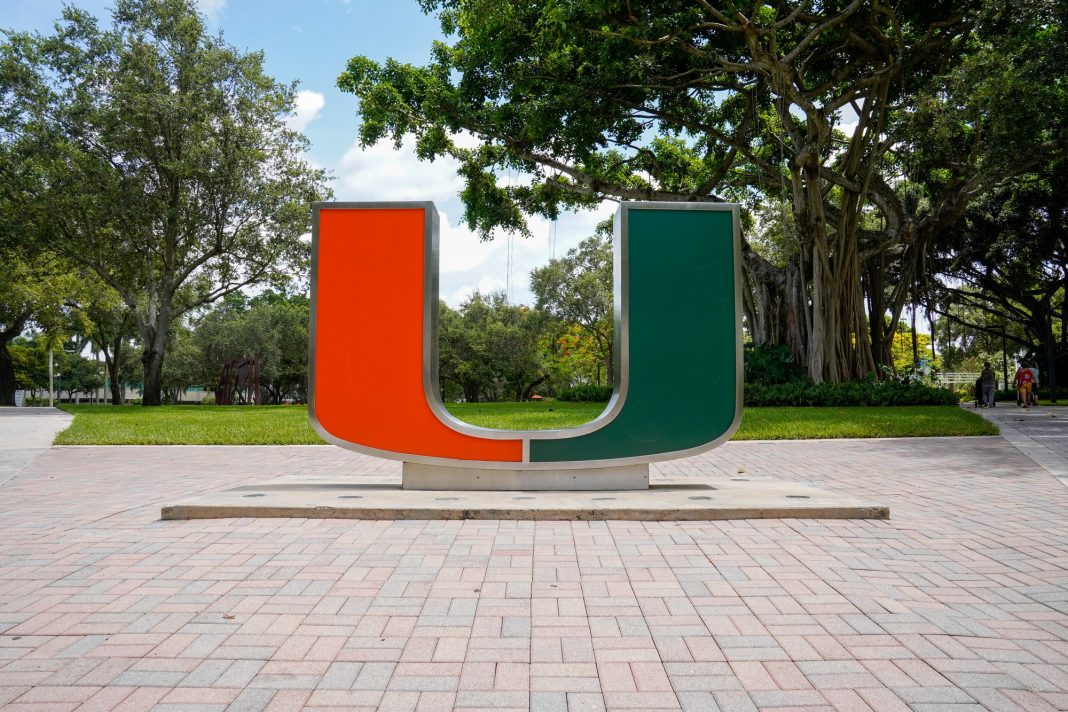The University of Miami and Florida State University tied at 55 in the US News and World Report’s 2022 ranking of best national universities.
FSU ranked 58 in 2021, but with UM dropping six places from its 2021 ranking of 49, FSU has evened the playing field in the race to recognition as Florida’s second best university. Florida’s top-ranked school, the University of Florida, continued its rise, coming in at 28 and ranking among the top five public universities in the country for the first time in university history, according to the Miami Herald.
Some Florida State graduates now at the University of Miami said they were happy to see their alma mater ranked alongside UM.
“As a Florida State alumni now at the University of Miami, my immediate reaction was pride,” said Jaylene Sosa, a research assistant at the Miller School of Medicine. “Seeing the school you graduated from continue to rise in ranks is always great, and the fact that it is now becoming as prestigious as UM is an incredible accomplishment.”
Faculty at UM that graduated from Florida State expressed mixed emotions about FSU’s rise and UM’s slide to 55.
“I am pleasantly surprised to see FSU move up, but I am disappointed to see UM dropping,” said Arthur Simon, a senior lecturer in the Department of Political Science and PhD alumni from FSU. “UM has been dropping for a while now.”
One contributing factor to UM’s fall is the evolution of the metrics US News and World Report use to rank U.S. universities, Simon said.
“The ranking of a school is attributable to the fact that metrics used to evaluate rankings have changed somewhat over the years and schools manipulate the factors that will make them look a little better,” Simon said.
The U.S. News and World Report uses several factors to determine a school’s ranking, such as its graduation and retention rate, graduate indebtedness rank, the number of loans given to graduating students, class size, faculty compensation and degrees, tuition, standardized test scores and alumni contributions.
“Personally, I don’t look at rankings. I chose UM because of its diversity, its location, it’s a research institution that provides really great opportunities, its accolades and it has a low faculty student ratio,” said Timothy Arcari, a junior from Connecticut majoring in biomedical engineering. “I just think UM has a lot of opportunities that other schools don’t.”
FSU and UM differ greatly in several factors, as the schools have significant differences in tuition and other factors taken into account by the U.S. News and World Report. FSU’s out-of-state tuition cost was $21,683 in 2022, whereas UM’s was $54,760, according to the U.S. News and World Report’s rankings. In the fall of 2020, FSU had an undergraduate enrollment of 32,543 students, while UM had 11,334 undergraduate students.
While these factors may have contributed to FSU and UM’s tie, Simon said he ranks UM far above FSU.
“I don’t know why anyone else would ever want to go to school anywhere else other than Miami,” Simon said. “Once you get sand in your shoes you never want to go back. You can get an excellent education in Miami and have a really good time doing it.”
Both UM and FSU have solid academic reputations, but there are some qualities that each university could do better.
“Academic opportunity, experience and teachings within both institutions exceed expectations. They both have an incredible number of renowned professors and researchers with students who want to strive for the success of each institution, respectively,” Sosa said. “A great way to grow would be to continue offering the best resources possible to all of the individuals supporting or associating with the institution to ensure their successes.
UM ranked 32 at one point, but factors and the quality of students have changed. Students have some insight to offer to better the university’s ranking.
“We should look at the construction on campus. UM is taking positive steps. Look at the new science building, the new dormitories to improve the quality of student life, the Shalala Student Center,” Simon said. “The more students on campus, the more students to share the experience with. We pride ourselves on having small class sizes. There are financial pressures that lead to big classes, which is economically more efficient, but it is the wrong direction for the university to process if we want to distinguish a small university from a larger school.”






